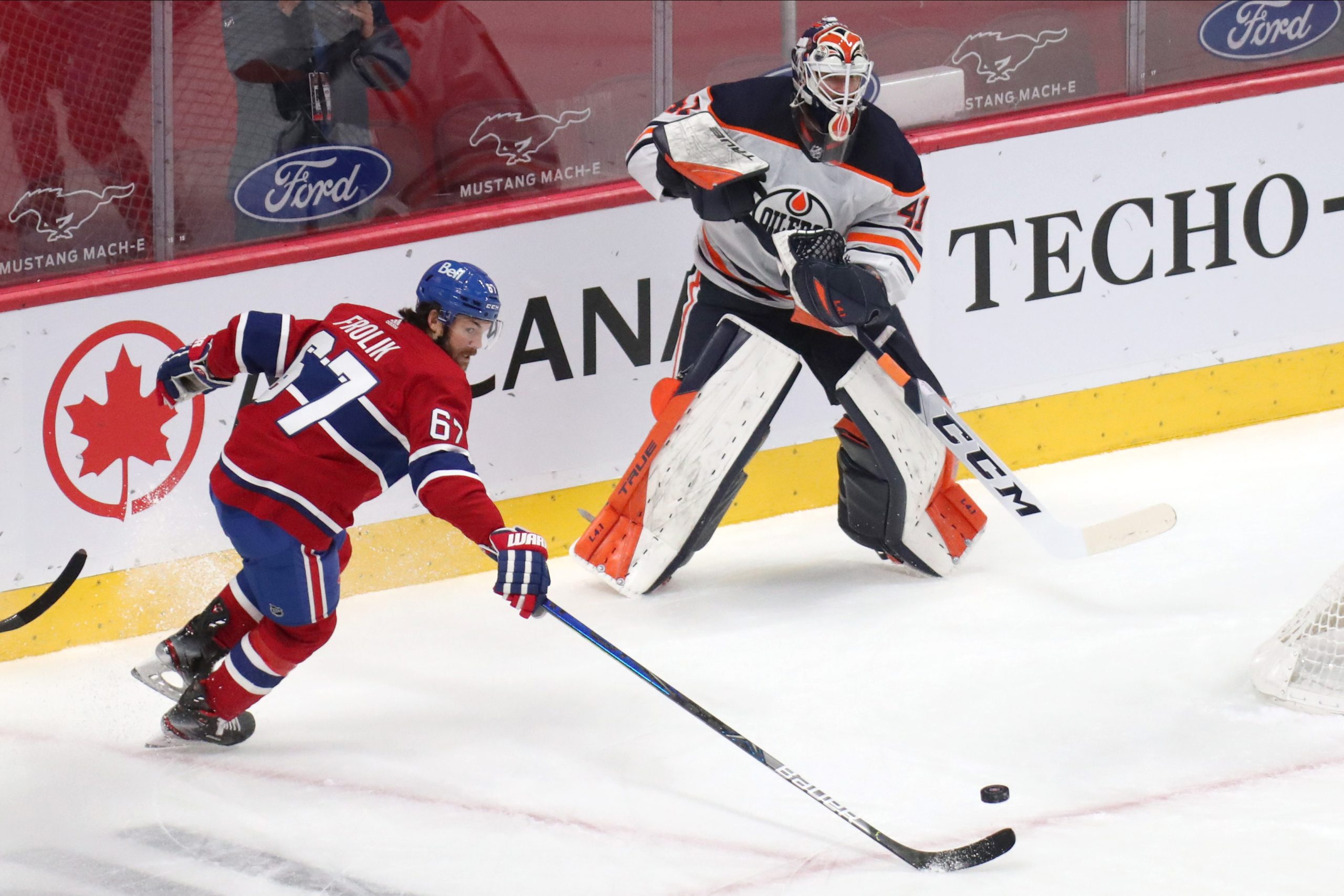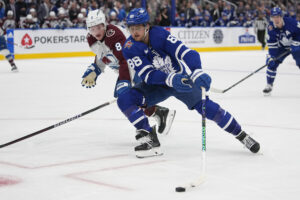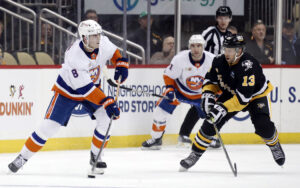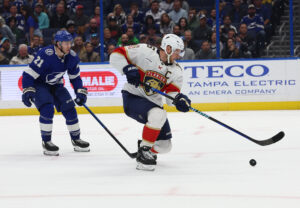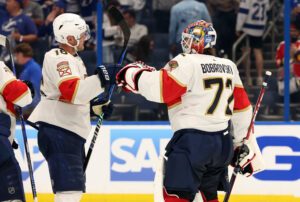NHL player development seems to always result in more questions than answers. How likely is it for a top pick to pan out? What makes a player a “steal”? Last Word On Hockey will be starting a new series on how to properly develop prospects from all different spots throughout the draft. With forwards drafted out of North American hockey leagues between 2005 and 2015, in the first round, covered, let’s shift to forwards drafted out of Europe.
NHL Player Development Of Top-Ten Picks
In the span of 2005 through 2015, there were 10 players selected within the top-ten out of Europe. Within that grouping, there were three players who made their NHL impacts (15+ games in a single season) in their DY+3 season, or, in other words, after two years of development following their selection in the draft. Those players were Michael Frolik, Mikael Granlund, and Nikita Filatov. In this piece, we will look at Frolik.
In these pieces, Last Word will be using Even-Strength Offence Goals Above Replacement (EVO), Even-Strength Defence Goals Above Replacement (EVD), Wins Above Replacement (WAR) and Goals Above Replacement (GAR). All those analytics come from Evolving-Hockey (paid subscription required).
NHL Player Development Of Michael Frolik
Frolik, drafted 10th overall by the Florida Panthers in the 2006 NHL draft, came out of the HC Kladno organization in Czechia. In his DY-1 season, he primarily played in the Czechia top men’s league, scoring three goals and four total points in 27 games, for 0.148 points per game. That ranked ninth amongst the 10 aforementioned forwards in DY-1 production. The following season, Frolik would once again play in the top men’s league. This time, he scored two goals and nine total points in 48 games, for 0.188 points per game. That ranked last out of those same 10 forwards in DY production.
Following the draft, Frolik would travel overseas to play with the Rimouski Oceanic in the QMJHL. In his first season in Canada, he scored 31 goals and 42 assists for 73 points in 52 games, for 1.404 points per game. That ranked first amongst the eight forwards still outside the NHL in DY+1 production. Playing a second QMJHL season, Frolik would score 24 goals and 41 assists for 65 points in 45 games, for 1.444 points per game. That ranked first again, this time amongst the three remaining forwards still outside the NHL in DY+1 production.
How Frolik Was Used
Following that second QMJHL season, Frolik would become a full-time NHLer. As a rookie, he played 79 games, averaging 14:48 time on ice per game. With that role, Frolik scored 21 goals and 24 assists for 45 points, a really strong showing. He finished 10th on Calder Trophy votes. Analytically, he was even better. His EVO (6.3) and EVD (0.5) were very impressive for a rookie. Those strong scores led his WAR (2.2) and GAR (11.9) to be very, very impressive.
With the exceptional underlying numbers and solid production, expectations rose. Along with that, so did his ice time. Playing 82 games the following season, Frolik averaged 17:29 per game. With that role, he scored 21 goals and 22 assists for 43 points, two points lower in three more games than his rookie season. His analytics all fell across the board, with his EVO (4.1) and EVD (0.4) seeing small regression. Meanwhile, his WAR (0.9) and GAR (5.0) saw very noticeable drop-offs.
Point Totals Continue To Regress, Mid-Season Trade Does Not Help
After a bit of a disappointing season, albeit not bad, Frolik would see 80 games in year three, averaging 15:36 per game. That was split between two teams, as he would be dealt to the Chicago Blackhawks after 52 games. In total, he scored 11 goals and 27 assists for 38 points, with just nine points in 28 games with his new team. His EVO (2.2) regressed even further, but the biggest positive was his EVD (5.0) sky-rocketing. With the huge defensive improvement, his WAR (1.0) and GAR (5.8) both steadily improved.
After that third season in 2010-11, Frolik would go on to play two more seasons in Chicago. In that span, he scored eight goals and 17 assists for 25 points in 108 games. Then, he would join the Winnipeg Jets in the 2013-14 season, and played two seasons there. With them, he scored 84 points in 163 games. In 2015-16, Frolik would join the Calgary Flames, where he stayed for parts of five seasons, totalling 145 points in 319 games. In 2019-20, he was traded by the Flames to the Buffalo Sabres, where he finished the season with four points in 19 games. His final season came in 2020-21, with the Montreal Canadiens. Frolik played just eight games and didn’t score a single point.
Where Michael Frolik Is Now, And Did The Panthers Draft The Right Player
After his final NHL season, Frolik would head to Europe. He played the 2021-22 season in Switzerland in the NL, playing for Lausanne HC. There, he scored 14 points in 23 games. This season, he plays in Czechia with Bili Tygri Liberec, scoring 24 points in 48 games.
In hindsight, was Frolik the right selection? Looking back at the 2006 draft, there’s only one player within a reasonable range that would have been the better choice. That player was Bryan Little, as he was the only player in the top-20 to score more career points than Frolik. In the first round, there were three: Little (12th overall), Claude Giroux (22nd), and Nick Foligno (28th). When sorted by career points, Frolik ranks 12th in the class, with only five of those players ahead of him taken behind him in the class (Little, Giroux, Foligno, Brad Marchand (71st) and Milan Lucic (50th). In hindsight, the 2006 class just was not a great class. While Michael Frolik did not pan out the way he was expected to, especially considering his rookie season performance, he still had a successful career. Hard to blame NHL player development being poor in regards to his potential not being met.
Raw stats from Elite Prospects and Hockey-Reference
Main Photo: Jean-Yves Ahern-USA TODAY Sports


